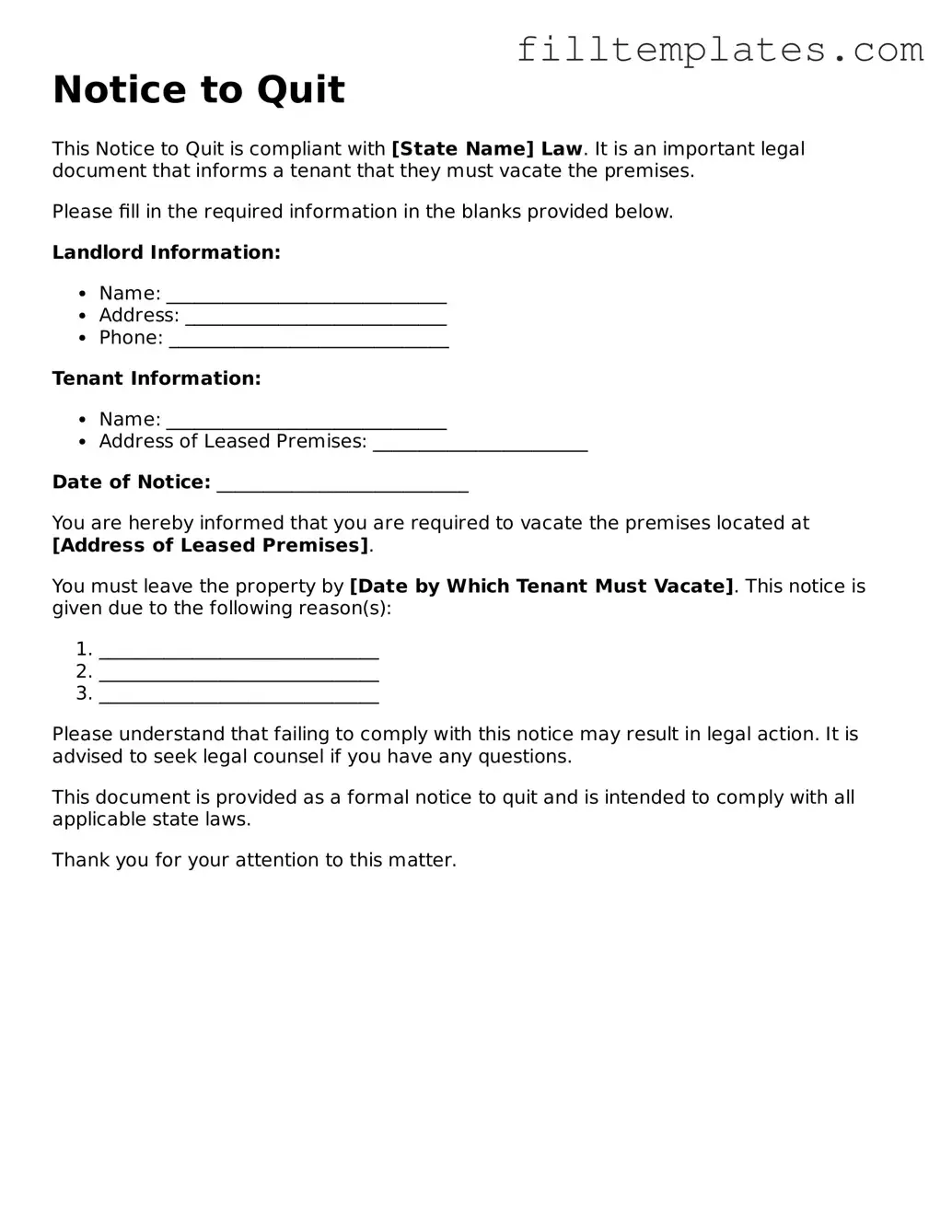Notice to Quit
This Notice to Quit is compliant with [State Name] Law. It is an important legal document that informs a tenant that they must vacate the premises.
Please fill in the required information in the blanks provided below.
Landlord Information:
- Name: ______________________________
- Address: ____________________________
- Phone: ______________________________
Tenant Information:
- Name: ______________________________
- Address of Leased Premises: _______________________
Date of Notice: ___________________________
You are hereby informed that you are required to vacate the premises located at [Address of Leased Premises].
You must leave the property by [Date by Which Tenant Must Vacate]. This notice is given due to the following reason(s):
- ______________________________
- ______________________________
- ______________________________
Please understand that failing to comply with this notice may result in legal action. It is advised to seek legal counsel if you have any questions.
This document is provided as a formal notice to quit and is intended to comply with all applicable state laws.
Thank you for your attention to this matter.
